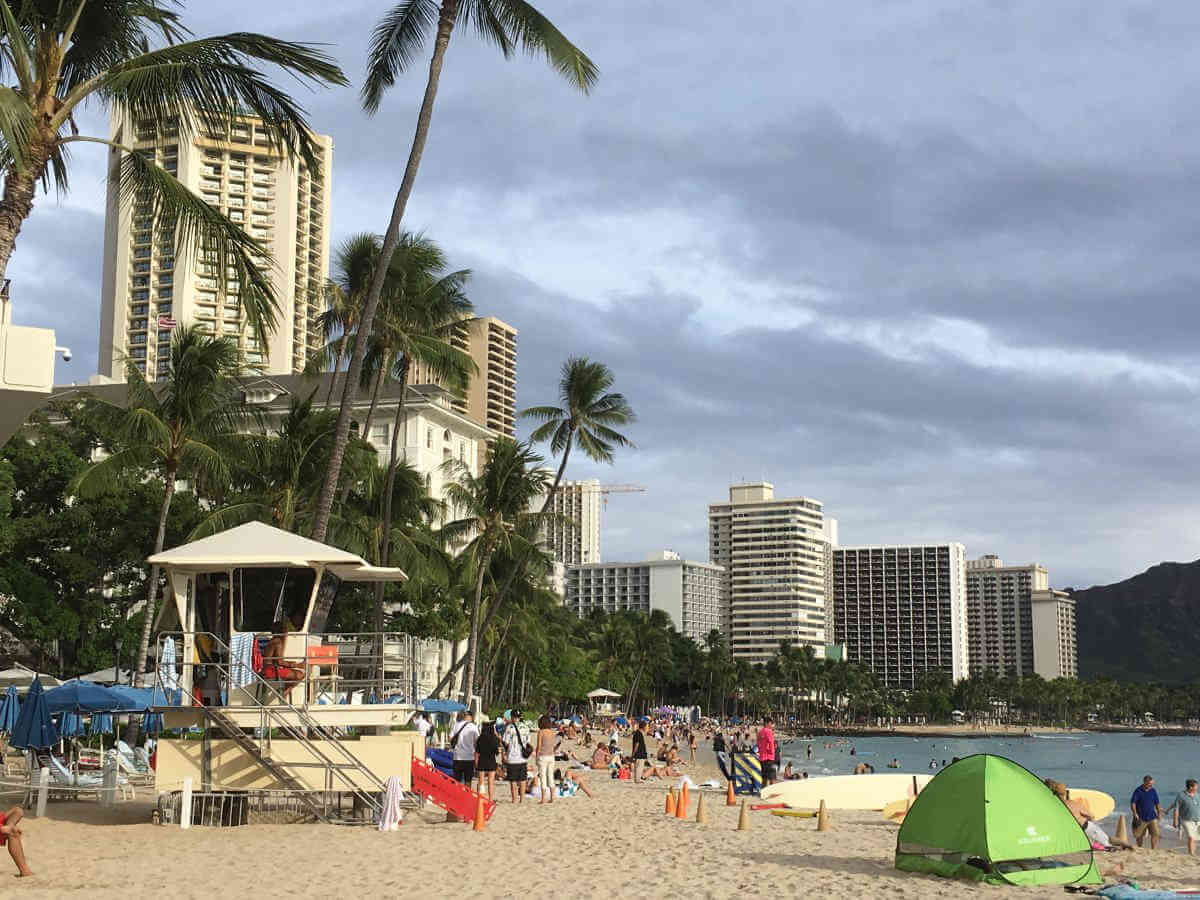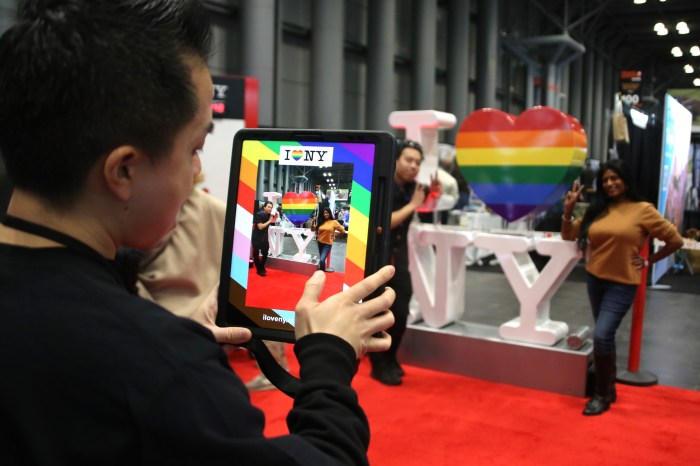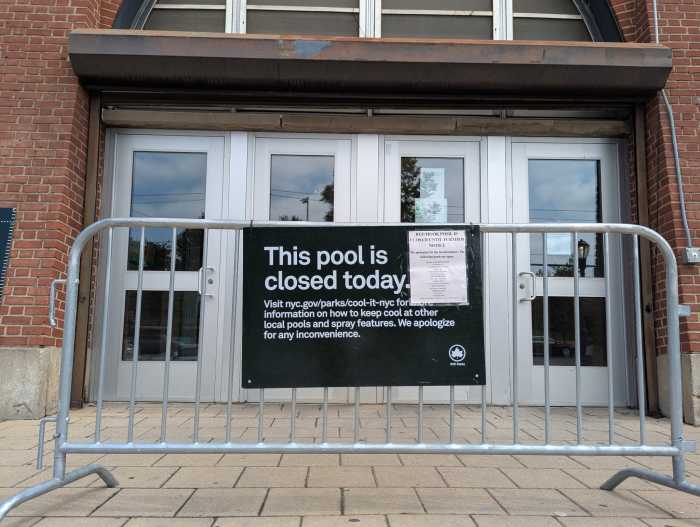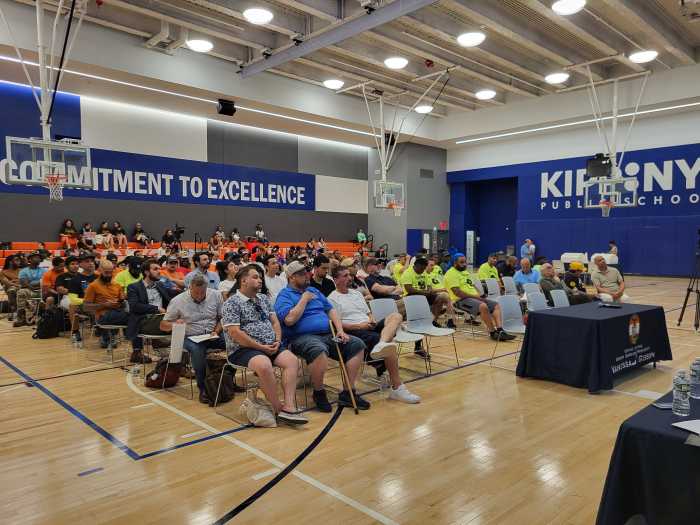When you see barefoot surfers carry their boards through downtown streets, you know you’re in a cool spot. They flock to the ocean waves every morning and evening. Meanwhile, all around them are the gleaming high rises, the international tourists snapping pictures, the open-air restaurants lining the avenues. Welcome to Waikiki, the bustling beachfront neighborhood of Honolulu.
The Hawaiian state capital is unlike any other. From its perch on the south shore of Oahu, the Pacific Ocean sparkles with vast serenity, sending warm breezes through the metropolis.
Rarely does a destination offer such a magically balanced beach-meets-city scene. Travelers to Oahu can find abundant, untouched nature across the island. They can also discover the polished urban culture of a storied city that today is a global culinary and arts magnet.
Best of all, to visit Oahu is to escape to a faraway land that, though it’s part of America, feels refreshingly distant from the stressors of the mainland. Here, travelers become residents for a spell, as the fast-moving Hawaiian rain showers wash away woes and the sunshine follows day after brilliant day.

Oahu is the third-largest Hawaiian island, and home to about a million locals across its modest 600 square miles. Most travelers start their visits here, since Honolulu’s airport is the international hub where most of the island’s nearly six million annual visitors arrive (others visit via cruise ships).
The city itself is massive, encompassing nature preserves, tropical gardens, and forests, including the picturesque Diamond Head State Monument and Park, home to the volcanic crater with hiking trails and one of the island’s best ocean vistas.
Waikiki, the main oceanfront district, is where you’ll find most of the action. Kapi’olani Park and the Honolulu Zoo anchor its south end, from which Kuhio Beach stretches north to become Waikiki Beach — both ever-popular with surfers and sunbathers.
The beaches are lovely, but can be crowded, so lodging in a comfortable, quiet place is key. There’s a wide range of hotels for every budget here, but the best splurge is the newly expanded Ritz-Carlton Residences Waikiki. From its undulating twin-tower facades, large, elegant rooms with balconies face the ocean or mountains. Complemented by its impeccable guest-services team, you can sip tropical cocktails at either of the hotel’s elevated infinity pools and breezy restaurants and feel miles away from the busy avenues below.

For a boutique option, the Surfjack Hotel & Swim Club offers vintage-inspired, island-chic accommodations that feel homey, even with its selfie-ready pool adorned with a “Wish you were here!” mural. The open-air, poolside hotel lounge and Mahina & Sun’s restaurant are well worth a visit, as is the on-site store with its unique beachwear and handmade souvenirs.
Restaurants are a big part of Waikiki’s appeal. Affordable spots like Marukame Udon and Surf & Turf Tacos offer reliable fare. Great sushi, meanwhile, awaits at Doraku inside the Royal Hawaiian Center, and at Morimoto Asia, with its open-air dining space overlooking Kuhio Beach. Waikiki’s International Marketplace is an expansive indoor/ outdoor complex that houses local shops as well as Stripsteak, where yes, the steaks are divine, as are the seafood selections and craft-cocktail menu. Head to Duke’s Waikiki for one of the area’s more traditional, deliciously filling Hawaiian beachside dining experiences.
Most of Hawaii’s LGBTQ culture glimmers in Waikiki. The gold standard here is Hula’s Bar & Lei Stand, located inside the fun, gay-friendly Waikiki Grand Hotel. For more than four decades, Hula’s has anchored the queer nightlife scene with incredible 10 a.m.-6 p.m. weekday happy hours and other daily food and drink specials, plus drag shows, club nights, and pretty sunsets from its open-air, second-floor outpost. Hula’s also hosts catamaran harbor sails every Saturday, and is a top local sponsor for fabulous Honolulu Pride every October.
Other friendly gay bars dot the area, like Tapas Restaurant & Lanai Bar, with its patio and karaoke nights. Bacchus Waikiki is a local’s favorite with a mixed crowd, daily drink specials, and weekend DJ nights. Among the city’s famous LGBTQ hotspots is flirty Wang Chung’s karaoke bar, with drag brunches and a late-night kitchen.

Drift over to Chinatown, a short cab ride away, for big drag revues and late-night dancing at Scarlet Honolulu. While you’re in the neighborhood, duck into atmospheric Tchin Tchin! Bar for bites and one of the city’s best wine lists.
Between all the glorious lounging, happy hours, and beachcombing, discover some of the state’s fascinating Polynesian roots and modern history at the majestic ‘Iolani Palace. This marvelously ornate 1882 mansion was built by King Kalakaua, the last monarch of the Kingdom of Hawaii. A tour here reveals both architectural splendor and some of the state’s fascinating, complex cultural heritage.
A few blocks away is the Honolulu Museum of Art, opened in 1927 and now home to a massive, international art collection, plus temporary exhibits, and the ARTafterDARK evening series, every last Friday of the month. Catch a shuttle from the museum to the satellite Spalding House contemporary art museum and hilltop gardens, located on Mount Tantalus.
To experience Hawaii’s largest natural— and cultural — history museum, head further west to the Bishop Museum. Housed in a former school, the 1898 Romanesque structure is a national landmark and houses an expansive collection of Polynesian and Hawaiian artifacts on display and in its archives.

For a bit of US history, don’t miss Pearl Harbor. The site is just outside the airport, and conveniently allows for checked bags and luggage ($5 apiece), making it an easy stop for a few hours before a flight home. Access to the Pearl Harbor Visitor Center, a short film, and the quick boat ride to view the Arizona Memorial are free, but you’ll want to reserve your ticket time well in advance. Reserve and buy tickets separately to tour the battleship, submarine, and Aviation Museum.
Oahu is sometimes called “the gathering place.” It seems a perfect nickname for an island that mixes history with modern life, and nature with urbanity. Maybe that’s why Honolulu makes visitors feel so welcome — like they’ve traveled across an ocean to find a place that, at least for a while, feels like home.
Kelsy Chauvin is a writer and photographer based in Brooklyn, specializing in travel, culture and LGBTQ interests. Follow her on Twitter and Instagram @kelsycc.




























